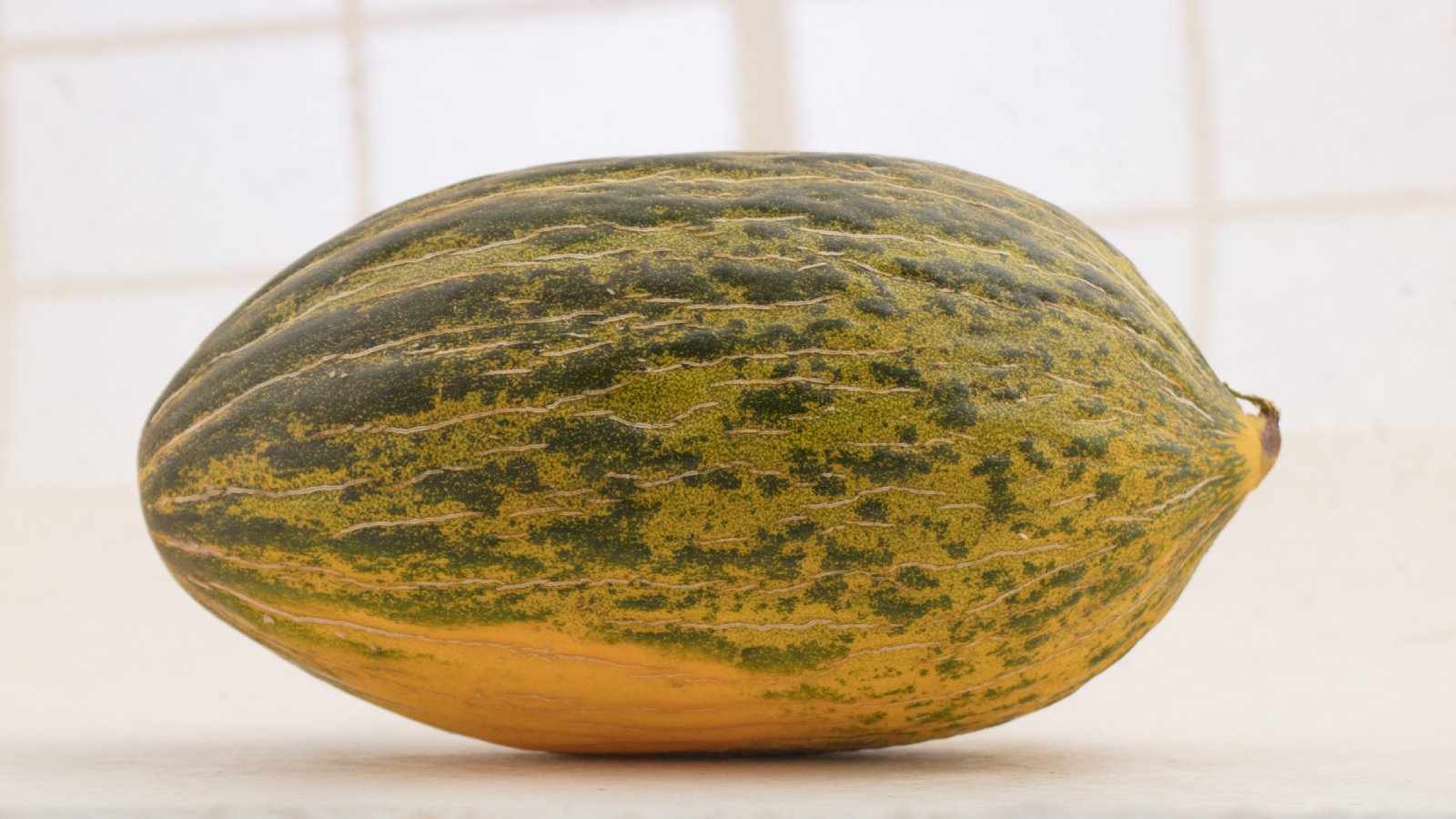Christmas Melon Plants: Learn About Santa Claus Christmas Melons


Melons are grown in many countries around the world and have unique forms, sizes, flavors and other characteristics. Christmas melon is no exception. What is a Christmas melon? It has a rather rugged and mottled exterior but the inside flesh is sweet and a creamy, yellow-green. Also known as Santa Claus, Christmas melon plants need plenty of room for their vines to roam and a bright sunny, warm location.
What is a Christmas Melon?
When selecting the melon varieties you wish to grow next season, consider Santa Claus Christmas melons. Christmas melon plants are native to Spain and require blazing sun and rich soil. The fruit is a muskmelon cultivar with a so-called "netted" skin. The sweet flesh is excellent for breakfast, a snack or even dessert. Much of our supply of Santa Claus Christmas melons is from California and Arizona, but in winter, they are shipped in from South America. The variety was originally discovered in Spain where it is called piel de sapo, which means "toad skin." This descriptive name refers to the mottled green and yellow of the exterior. The hard skin is slightly wrinkled, adding more amphibious characteristics. Young fruits are green with just a bit of gold flecking but become more yellow with green flecking when mature. The ends will become soft, but that is the only indication the fruit is ripe.
Growing Santa Claus Melons
The temperatures of the soil need to be at least 70 to 80 Fahrenheit (21 to 27 C.) in order for this plant to really take off. In cooler regions, start the plants indoors in spring and plant them outside when temperatures warm. For tropical regions, direct sow seed into a prepared bed in August to September. Cultivate the soil deeply when growing Santa Claus melons, as roots can get up to 4 feet (1 m.) long. Melons seem to prefer to grow on mounds. Place 2 to 3 seeds or seedlings per mound. Germination in warm conditions is generally 10 to 14 days from planting. Harden off transplants for a week to acclimate them to outdoor conditions.
Santa Claus Melon Care
You can choose to train the plants to a trellis to save room and keep them from any ground level pests. This will also prevent developing fruit from direct contact with soil. Keep competitive weeds away from the vines. Melons need lots of water. Keep soil consistently moist. Providing organic mulch around the plant can help conserve water. Avoid overhead watering, which can promote the formation of fungal diseases. As the season wraps up, pinch off new growth shoots so that the plant's energy goes into ripening the melons. Use pyrethrin insecticides at dusk to prevent common melon pests without damaging honeybees. In areas with various varmints, cover ripening melons with milk jugs or another clear container.
Sign up for the Gardening Know How newsletter today and receive a free copy of our e-book "How to Grow Delicious Tomatoes".

Bonnie Grant is a professional landscaper with a Certification in Urban Gardening. She has been gardening and writing for 15 years. A former professional chef, she has a passion for edible landscaping.